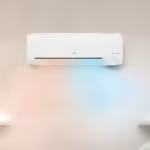Choosing the Perfect Office Desk: A Guide to Productivity and Comfort
Your office desk is more than just a piece of furniture—it’s the foundation of your workspace and can significantly impact your productivity, comfort, and overall work experience. Whether you’re setting up a home office or upgrading your current workspace, choosing the right office desk is essential for creating an efficient and functional environment. In this article, we’ll explore the key factors to consider when selecting an office desk and how it can enhance your work performance and well-being.
Click here to get the best deal on Office desks
1. Types of Office Desks
Office desks come in various styles and designs, each tailored to different needs, spaces, and work habits. Understanding the types of desks available can help you find the one that best suits your workflow and office setup.
a. Standard Desks
Standard desks, also known as writing desks or workstations, are simple and practical. They typically have a flat surface with ample room for a computer, notebooks, and office supplies. These desks are great for those who need a no-fuss, minimalist workspace.
- Pros: Affordable, versatile, ideal for small spaces.
- Cons: Limited storage, may not be ideal for multi-monitor setups.
b. Executive Desks
Executive desks are larger, more luxurious desks designed for spacious offices or executive suites. They often come with built-in drawers, cabinets, and additional storage options, offering ample space for work essentials and documents.
- Pros: Lots of storage, large surface area, professional appearance.
- Cons: Bulky, expensive, requires significant space.
c. Corner Desks
Corner desks, also known as L-shaped desks, maximize space by fitting neatly into a corner. This design provides extra surface area for work and can be ideal for people who use multiple devices or need a lot of room for paperwork.
- Pros: Space-saving, large work surface, good for multitasking.
- Cons: May be difficult to fit in small rooms, can be harder to assemble.
d. Standing Desks
Standing desks allow you to alternate between sitting and standing while working. These desks are becoming increasingly popular due to their health benefits, as sitting for prolonged periods has been linked to various health issues.
- Pros: Promotes movement, improves posture, boosts energy.
- Cons: More expensive, may require adjustment to standing work.
e. Adjustable Desks
Adjustable desks, also known as sit-stand desks, are versatile pieces of furniture that allow you to switch between sitting and standing positions with ease. These desks can be manually adjusted or motorized for quick height changes.
- Pros: Ergonomic, adaptable, great for health-conscious users.
- Cons: Costlier than standard desks, requires more assembly and maintenance.
f. Floating/Wall-Mounted Desks
Floating desks are mounted on walls and can fold up when not in use, making them perfect for small spaces or minimalist setups. They provide enough surface area for light work, such as writing or using a laptop.
- Pros: Space-saving, modern design, ideal for small rooms.
- Cons: Limited storage, less stable for heavy equipment.
2. Key Factors to Consider When Choosing an Office Desk
Choosing the right desk requires more than just selecting a design you like. You’ll need to consider several factors to ensure the desk meets your specific needs and complements your workspace.
Click here to get the best deal on Office desks
a. Size and Space
The size of the desk should be in proportion to the available space in your office. Measure the area where you plan to place the desk, ensuring there’s enough room for both the desk and comfortable movement around it. If you’re working in a smaller space, consider compact or corner desks to maximize your area.
- Small Spaces: Look for minimalist desks, floating desks, or L-shaped desks that fit into corners.
- Large Spaces: Opt for executive desks or U-shaped desks that offer plenty of room for multitasking and storage.
b. Functionality
Think about how you plan to use your desk. If you require ample storage for paperwork, books, or supplies, look for desks with built-in drawers, shelves, or cabinets. If you work with multiple monitors, make sure the desk surface is large enough to accommodate them without feeling cramped.
- Storage Needs: Desks with filing drawers or shelves can keep your workspace organized and free from clutter.
- Technology: If you use a lot of electronics, make sure the desk has cable management options, such as grommets or holes for routing wires.
c. Ergonomics
An ergonomically designed desk can make a big difference in your comfort and health while working. The desk height should allow you to sit with your feet flat on the floor, your arms parallel to the desk surface, and your monitor at eye level to avoid strain.
- Height: If you’re taller or shorter than average, consider an adjustable desk that allows you to customize the height to suit your body.
- Desk Chair Compatibility: Ensure that the desk pairs well with your office chair, providing enough legroom and the ability to sit comfortably without slouching or straining.
d. Material and Durability
Office desks are made from a variety of materials, each offering different levels of durability, style, and price. Consider your budget and the look you want to achieve when choosing materials.
- Wood: Solid wood desks are sturdy and provide a classic, professional appearance. However, they can be expensive and heavy.
- Laminate: Laminate desks are budget-friendly and come in a variety of finishes that mimic wood or metal. They’re easy to clean and durable, but may not have the same premium feel as solid wood.
- Glass: Glass-top desks offer a sleek, modern look but can be prone to fingerprints and smudges. They’re best suited for contemporary spaces.
- Metal: Metal desks are durable, easy to clean, and give an industrial, minimalist vibe. However, they can be less warm and inviting than wooden desks.
e. Style and Aesthetic
Your desk should complement the overall style and aesthetic of your office. Whether you prefer a traditional, rustic, or modern look, there are desks to suit every taste. Consider how the desk’s material, color, and design will fit with the rest of your office décor.
- Traditional: Choose wood desks with detailed craftsmanship and a classic design.
- Modern: Opt for sleek, minimal desks with clean lines and neutral tones.
- Industrial: Go for a combination of metal and wood for an industrial, edgy look.
3. The Benefits of a Well-Designed Office Desk
Investing in a well-designed office desk can significantly improve your productivity, comfort, and overall work experience. Here are some of the key benefits:
- Increased Productivity: A desk that meets your functional needs—providing ample surface area, storage, and ergonomic support—can help you stay organized and focused.
- Improved Comfort: Ergonomically designed desks prevent strain on your back, neck, and wrists, allowing you to work comfortably for longer periods.
- Enhanced Organization: Desks with integrated storage options like drawers, filing cabinets, or shelves help keep your workspace tidy and clutter-free.
- Boosted Aesthetic: A well-chosen desk can elevate the look and feel of your office, making it a more pleasant place to spend time and even impressing clients or colleagues if your office is public-facing.
Conclusion
Choosing the perfect office desk is an important step in creating a productive and comfortable workspace. Whether you prefer a simple writing desk, a spacious executive desk, or an ergonomic standing desk, there’s a wide variety of options to suit every need and style. By considering factors like size, functionality, ergonomics, and aesthetics, you can find a desk that not only enhances your work environment but also contributes to better focus, organization, and well-being.
Invest in a desk that supports your workflow, fits your space, and reflects your style to create a workspace where you can thrive.



